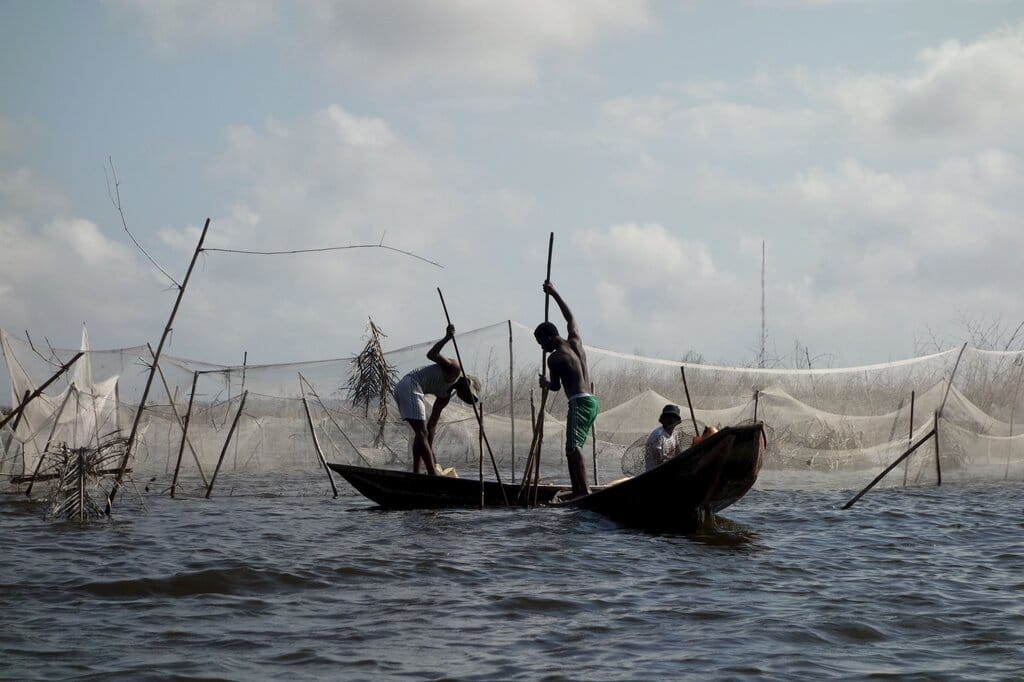Marine heatwaves have been predicted to cause a huge loss to jobs, marine life and fish stocks, by a new University of British Columbia (UBC) study published this month. It found that there may be a 6% drop in a country’s catch, and a 77% drop in biomass for species that are fished, during these predicted periods of hot temperatures. These projections were on top of projections for long term impacts on fisheries that were already established before the study was published.
—
A new UBC study has predicted that further marine heatwaves will have a detrimental effect on marine life, fish stocks and millions of jobs worldwide. It found that globally, on top of projections for long term impacts on fisheries from climate change already established before the study, there may be a 6% drop in a country’s catch, causing millions to lose their jobs, and a negative long term impact on fisheries and marine life.
The model used to create the projections was based off of a worse-case scenario event of the Earth experiencing extreme high temperatures due to nothing being done to alleviate the heating of the planet. It incorporated extreme ocean temperatures in Exclusive Economic Zones, where the majority of global fish catches occur, and looked at the three areas of: (1) fish stocks; (2) the fishing industry; and (3) their dependent human communities.
It created predictions of a 6% drop in a country’s catch, with 77% of species that are fished set to decrease in their biomass (population and weight) during these predicted periods of hot temperatures. These projections are not limited to North America, as they have predicted this to happen on a global scale, affecting the fishing industries in South Asia, Southeast Asia, the Pacific Islands, the Pacific Coast of the Americas and some countries in West Africa.
“These extreme annual temperatures will be an additional shock to an overloaded system,” said lead author Dr. William Cheung, professor and director of UBC’s Institute for the Oceans and Fisheries (IOF). “We see that in the countries where fisheries are already weakened by long-term changes, like ocean warming and deoxygenation, adding the shock of temperature extremes will exacerbate the impacts to a point that will likely exceed the capacity for these fisheries to adapt. It’s not unlike how COVID-19 stresses the healthcare system by adding an extra burden.”
Extreme temperature events are projected to occur more frequently in the future, says co-author Dr. Thomas Frölicher, professor at the climate and environmental physics division of the University of Bern. “Today’s marine heatwaves and their severe impacts on fisheries are bellwethers of the future as these events are generating environmental conditions that long-term global warming will not create for decades.”
In Pacific Canada, there have been predictions of a decrease in Sockeye salmon catches, with estimates of them decreasing by 26% during high temperature events up until 2050, with an annual loss being predicted at 260 – 520 tonnes of fish.
Additionally, Peruvian Anchovetas are projected to decline by 34% in extreme high temperatures up until 2050 – that is more than 900,000 tonnes a year. This would therefore cause a loss of more than five million to the potential catch of Peruvian anchovetas, and can cause a 25% drop in annual revenues for the Peruvian anchovetas fishers – a loss of around USD$600million.
Nearly three million jobs are predicted to be lost in the Indonesian fisheries-related industry up until 2050.
It also predicted that in Bangladesh, where fisheries-related sectors employ one-third of the county’s workforce, a 2% cut (approximately one million) to the country’s fishery jobs can be predicted to occur during these extreme marine heatwaves. It can be expected that more than six million jobs may be lost by 2050, due to this long-term climate change.
There is a similar situation in Ecuador. It is predicted that extreme high temperatures can cause an additional 10% (around USD$100million) of the country’s fisheries revenue, on top of the 25% reduction that is expected to occur by the mid-21st century.
“This study really highlights the need to develop ways to deal with marine temperature extremes, and soon,” Dr Cheung said. “These temperature extremes are often difficult to predict in terms of when and where they occur, particularly in the hot spots with limited capacity to provide robust scientific predictions for their fisheries. We need to consider that unpredictability when we plan for adaptations to long-term climate change.”
“We need to have mechanisms in place to deal with it,” said Dr Cheung. He stressed the importance of active fisheries management. This could include changes such as adjusting catch quotas in areas where fish stocks are low from high temperatures, or even shutting fisheries in some cases, to allow the stocks to rebuild and grow.
Co-author Dr. Colette Wabnitz, an IOF research associate and lead scientist at the Stanford Center for Ocean Solutions, agrees that there should be collective management of these fisheries in place, and some decisions should be based on communities’ livelihoods, as well as food and nutrition security.
“Stakeholders are diverse, and include not only industry, but also indigenous communities, small-scale fisheries and others. They should be involved in discussions about the effects of climate change and marine heatwaves as well as the design and implementation of solutions.”
Marine heatwaves have been a pressing issue for decades. We see them creating a state of inhabitability in the Middle East, and leaving catastrophic long-term effects with the droughts they are causing.
This year, a UN Climate Change Report warned that extreme weather conditions are happening at an accelerated rate. It found that weather events such as heatwaves and droughts that should be happening every 50 years, will soon be happening every four years.
It came to this conclusion by using a model that quantifies the likelihood of extreme weather events happening in a wide variety of worse-case scenarios, similar to the model that was used in this UBC study.
For example, the report found that heavy rain events that should occur once-in-a-decade, are already 6.7% wetter and 1.3 times more likely to occur, than compared with the 50 years leading up to 1900, when human-driven warning began to occur. Additionally, droughts that previously happened once a decade now occur every five or six years.
Researchers from the report also warned that other “tipping point” events occurring is a possibility. They stated that: “Abrupt responses and tipping points of the climate system, such as strongly increased Antarctic ice sheet melt and forest dieback, cannot be ruled out.”
Dr Robert Rohde, lead scientist of Berkeley Earth, said: “What were once-in-50-year heat extremes are now occurring every 10 years… By a rise of 2C, those same extremes will occur every 3.5 years.”
Xuebin Zhang, a climatologist with Environment Canada in Toronto, warned that as climate change progresses further, such extreme weather events will not just become more frequent, but also more severe. He believes that compound events such as heat waves and long-term droughts should be expected to occur simultaneously.
“We are not going to be hit just by one thing, we are going to be hit by multiple things at the same time,” said Zhang.
What Can Governments Do to Help?
Although it may seem like the climate change crisis is far from being resolved, there are still things individual governments can do to alleviate the hardships caused by these heatwaves.
In the United States, the Federal Emergency Management Agency (FEMA) has been criticised for not doing enough to protect populations from the consequences of droughts.
FEMA has been found to devote much fewer resources to natural disasters caused by heatwaves, than compared to the resources it dedicates for disasters like floods, hurricanes and tornadoes.
Recommendations come in the form of the following, and these could be applied to governments globally:
- Cooling centres should be provided – these can be areas that people can go to when their homes are too hot. These can come in the form of convention centres, school auditoriums, sports arenas, cafeterias, houses of worship, recreation centres, and any other large covered spaces.
- Urban heat island effect should be alleviated – this can be done by planting more trees and conscious efforts should be made in conserving the vegetation and greenery of the land.
Make use of the legal tools available – new policies and laws can be passed to alleviate the hardships on the population. For example, landlords can be legally obligated to provide cooling facilities as well as heating facilities in their properties, and low income households can be given grants towards buying air conditioners and the cost of running these air conditioners.
Featured image by: Hippopx


















